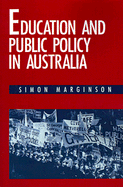Book contents
- Frontmatter
- Contents
- List of Tables
- List of Acronyms
- Preface
- PART I THE SETTING
- PART II ECONOMIC THEORIES ABOUT EDUCATION
- PART III EDUCATION POLICIES
- 4 Resources and outcomes
- 5 Productivity and efficiency
- 6 Economic policies in higher education
- 7 Preparation for work
- 8 Markets in education
- 9 Private and public education
- PART IV CONCLUSION
- References
- Index
9 - Private and public education
from PART III - EDUCATION POLICIES
Published online by Cambridge University Press: 03 May 2011
- Frontmatter
- Contents
- List of Tables
- List of Acronyms
- Preface
- PART I THE SETTING
- PART II ECONOMIC THEORIES ABOUT EDUCATION
- PART III EDUCATION POLICIES
- 4 Resources and outcomes
- 5 Productivity and efficiency
- 6 Economic policies in higher education
- 7 Preparation for work
- 8 Markets in education
- 9 Private and public education
- PART IV CONCLUSION
- References
- Index
Summary
The dual public and private system of schooling is the powder keg of Australian educational politics. During the 1960s, and again from the late 1970s to the mid-1980s, it blew up into major disputes over state aid to private schools and the balance of government priorities between equality of opportunity and freedom of choice. Relations between the school sectors were stabilised by Labor's new private schools policy in the mid-1980s, but Liberal National Party policies support more rapid growth of private school funding, threatening to ignite the state aid controversies once again. This chapter reviews twenty years of commonwealth policies on schooling, and draws up a balance sheet on the prospects for the private sector in higher education.
THE DUAL SYSTEM OF SCHOOLING
A FRAGILE BARGAIN
In their social roles, public and private schools are different. Public schooling is a universal service, open to all and socially and culturally heterogeneous. There are no compulsory fees. Public schools have broad custodial responsibilities – they take on problem students whom private schools ignore, but are also required to provide good academic programs. Public schooling is controlled by legislation and regulation, although there is a trend to greater autonomy.
Private schools do not have the same democratic obligations and constraints. There are, however, some restrictions on their operations. They must meet minimal standards of health, safety and education to obtain formal registration. Before opening, they might be required to answer objectors under the new schools procedures.
- Type
- Chapter
- Information
- Education and Public Policy in Australia , pp. 200 - 228Publisher: Cambridge University PressPrint publication year: 1993



